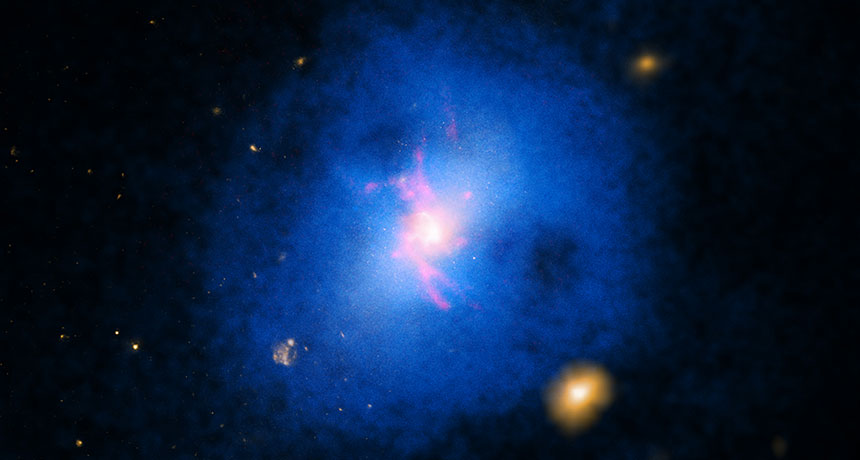This black hole is an extreme recycler
Giant fountains of ejected gas cycle back to feed the hungry galaxy center

RADICAL RECYCLING A galaxy bathed in a pool of hot gas (blue) has fountains of hydrogen (red) erupting from its core, as seen in this composite image. A new study shows how these fountains get recycled into new stars and black hole food through a galaxy-sized pump.
X-ray: CXC/NASA, Michigan State Univ., G. Voit et al; optical: NASA, STScI, DSS; H-alpha: W. Baade Telescope/Magellan and Carnegie Observatory, Univ. of Maryland, M. McDonald